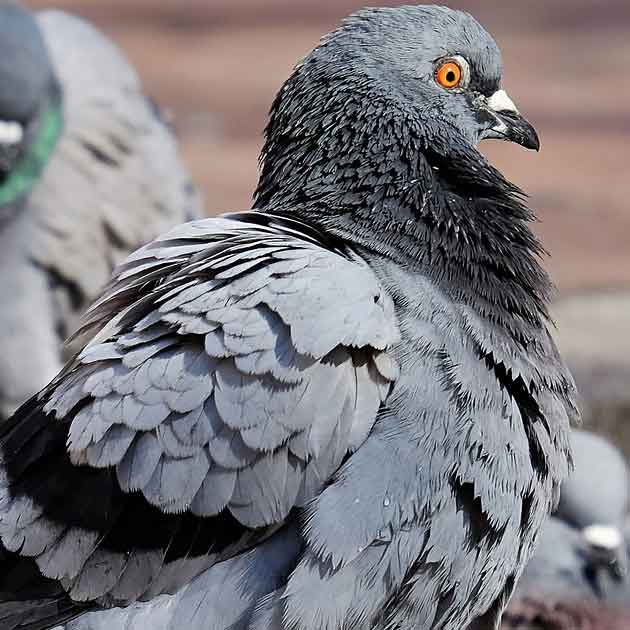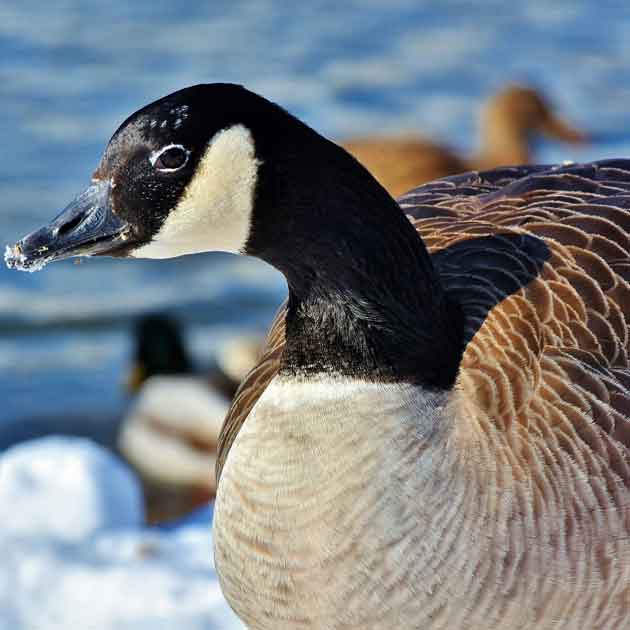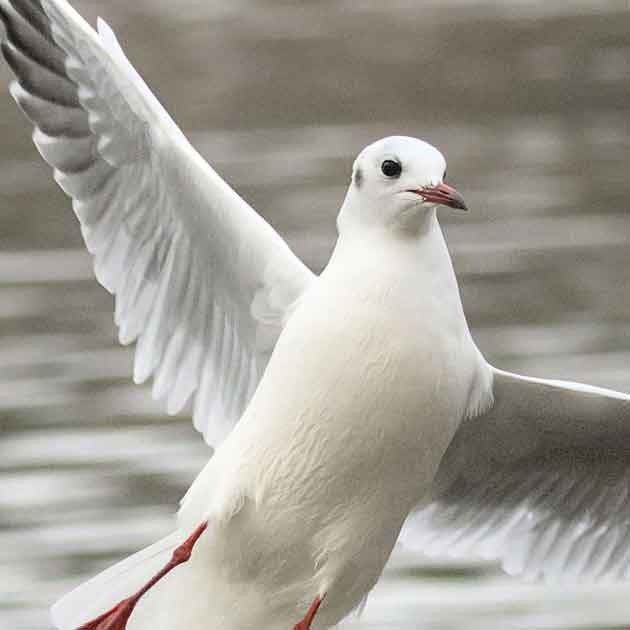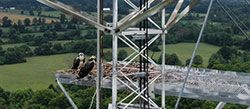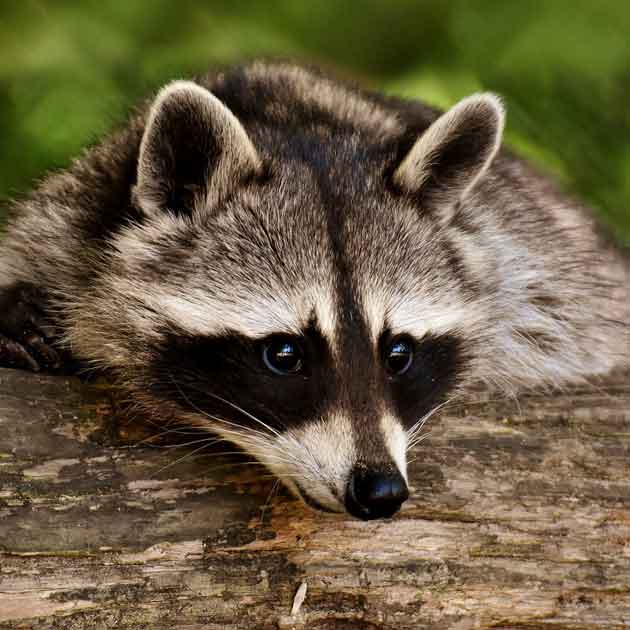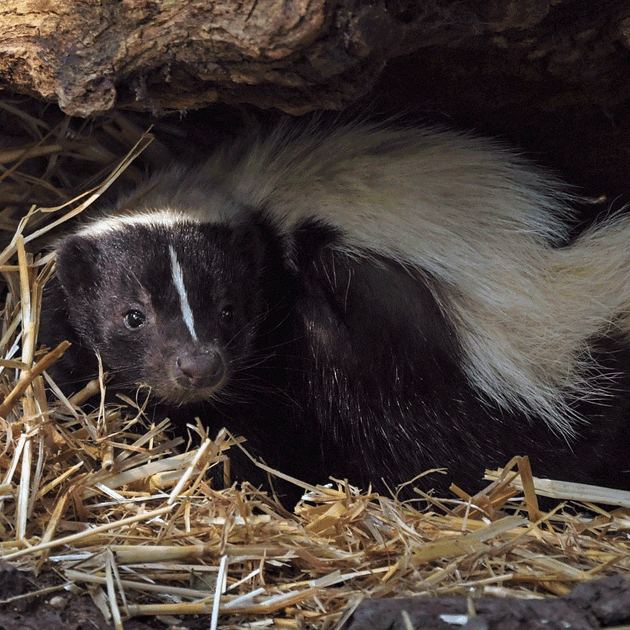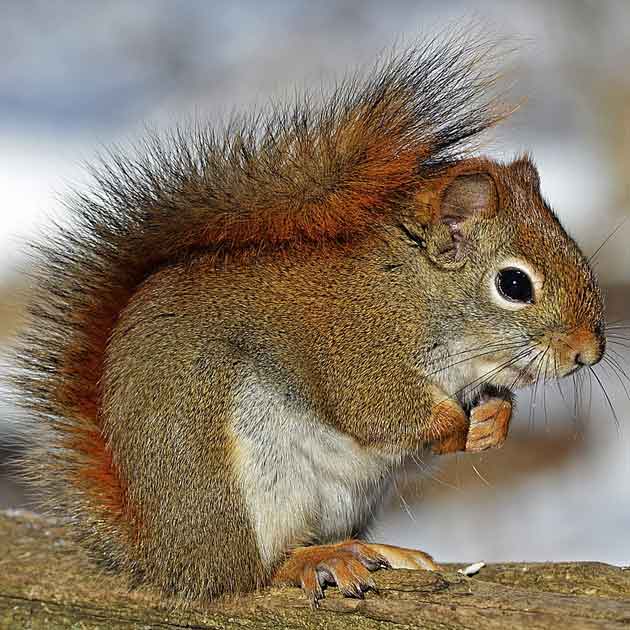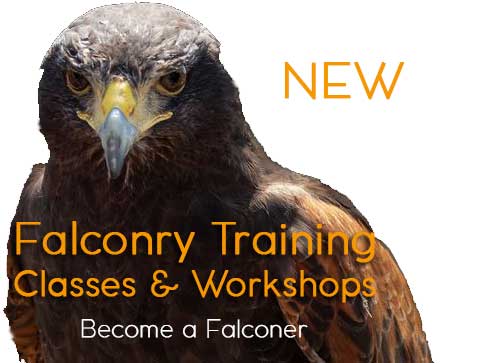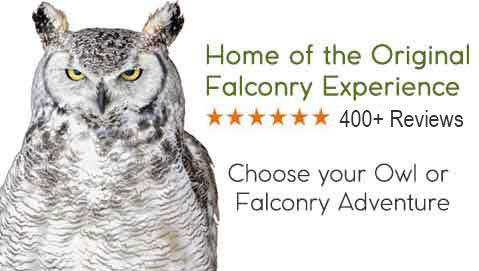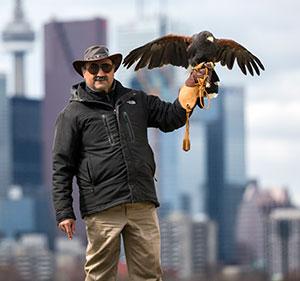BLOG | Hawkeye
News, little truths and wisdom regarding Pest Bird & Animal Wildlife Control, Falconry, and Birds of Prey....
The Best Time of Year for Raccoon Removal in Brampton
- Written by: Dan Frankian
Raccoons are a year-round nuisance in Brampton's residential and commercial areas. Often, they are more than just a nuisance and responsible for considerable damage to homes, yards, and commercial spaces. Let's explore when is the best time for raccoon removal in Brampton.
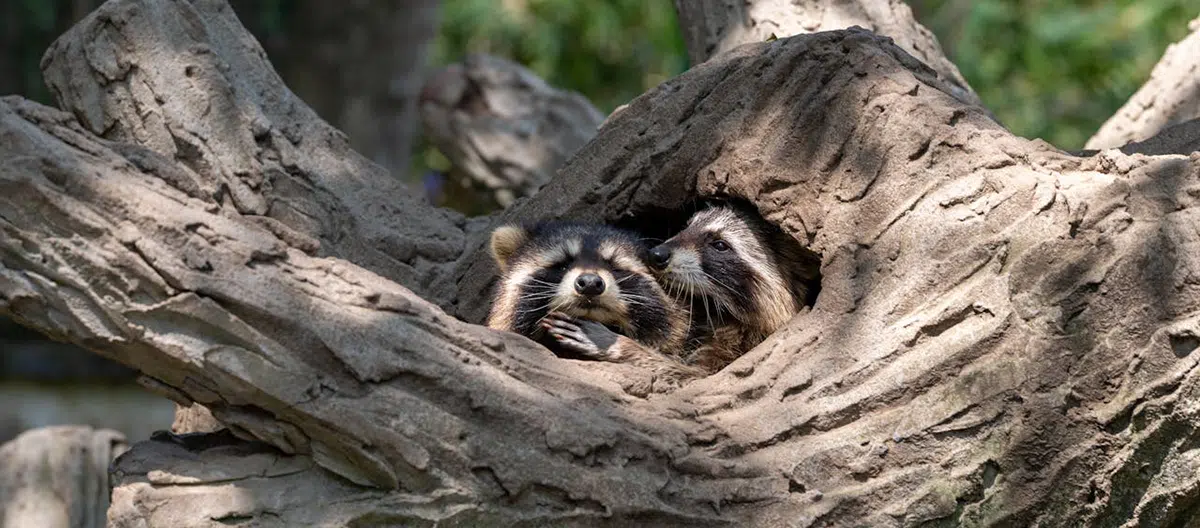
While there is an ideal time for raccoon removal, the method and legality may matter just as much. Other GTA wildlife companies are limited to offering temporary solutions, such as live trapping and releasing the animal within a one kilometre radius of the capture site. Hawkeye Bird & Animal Control is the only company offering permanent raccoon removal in Brampton. Learn more about when to act and why Hawkeye's permanent removal is the only true long term solution
Raccoon Activity in Brampton Throughout the Year
Spring
Early spring is the time when raccoon removal is most advantageous. Raccoons breed in very early spring and birth litters of 4 kits (average) later in the spring and early summer. Ideally, we remove the animals before they reproduce and interrupt the breeding cycle. Because raccoons are so adept at living alongside humans in urban areas and deal with fewer natural predators in urban settings, most raccoon babies survive their first year of life. In comparison, the mortality rate in the wild routinely reaches up to 50%. Spring is also the time when a pregnant female will move mountains to get into a warm and cozy attic or similar space to prepare her birthing den.
Summer
Summer sees momma raccoon raising her offspring and slowly introducing them to the outside world. Once kits are born, removal becomes much more problematic. Both, the location may be an issue and/or difficult to access and mother and little ones will have to be moved together to ensure survival of the kits.
Fall
During the fall, a mother and her offspring will likely be looking for a safe and warm refuge with winter looming on the horizon. Young raccoons often stay with their mother throughout the first winter. More bodies means more heat and higher chances of survival for all. During this time, spring and fall are both primary seasons for raccoons breaking into Brampton attics or outbuildings.
Winter
If we haven't been able to stop a raccoon family from moving in before now, they'll be well settled in and prepared to stay for the long haul. Again, your attic is probably the place most favoured.
Best Times for Permanent Raccoon Removal in Brampton
The absolute best time for permanent raccoon removal in Brampton is at the very end of winter or very early spring – once raccoons are frolicking out ‘n about, looking for a mating partner, and BEFORE kits are born. The fewer animals that need to be removed, the better. And the absolute last thing we’ll want to happen is to remove mum and leave one or more of her babies behind.
Newborn raccoons are completely dependent on their mother. They are born blind and hairless; they have zero chance of survival if separated from their mum.
Why the "Best Time" for Hawkeye's Raccoon Removal Is Always Now
Addressing Immediate Problems:
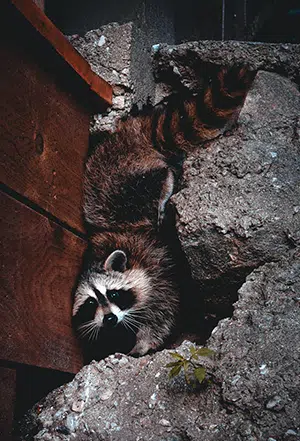 If you should discover or even just suspect a raccoon in your home or business, it’s time to act.
If you should discover or even just suspect a raccoon in your home or business, it’s time to act.
- Minimize structural damage by intervening immediately;
- Minimize health risks to you, your family, pets, employees, etc.
Preventing Future Issues:
The standard practice of catch and release almost ALWAYS leads to recurring raccoon infestation and costs.
- By permanently removing all raccoons on site, you can rest assured that these same animals will not return.
- By cutting off the breeding cycle, overall raccoon populations can be better managed and brought back to reasonable levels.
Humane and Effective Solution:
All living creatures ought to be treated with respect and compassion. Hawkeye’s permanent raccoon removal allows for a pain- and stress-free solution for the animal(s).
- Raccoons are caught in live traps providing food, water, and shelter;
- Captured animals are then humanely euthanized without causing undue distress or discomfort;
- In contrast, animals relocated often find themselves disoriented and confused, desperately seeking to return to familiar territory – and ultimately start the cycle all over again.
Read more: The Best Time of Year for Raccoon Removal in Brampton
How to Get Rid of Geese from Your Dock
- Written by: Dan Frankian
Ahhh.. summer is on the horizon and with the warmer weather we all look forward to activities near or on the water. Unfortunately, so do our beloved Canada geese.
Of course, being waterfowl, they love and in fact need water. And, here in Ontario, we have plenty of lakes (large and small), beaches, marinas, and parks offering water features.
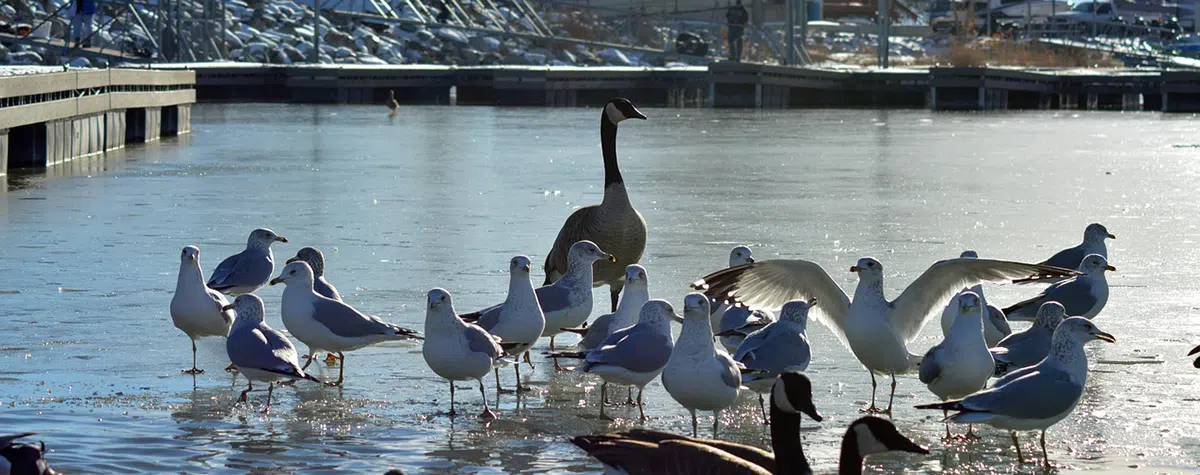
In fact, Toronto and its nearby cottage regions have over 250,000 lakes!
Let’s have a look at what we can do to get rid of geese from our docks and marinas this summer:
What’s The Issue with Geese on Docks?
- Geese are loud, messy, and often times aggressive. Probably not what we look for in our summer retreat with the kids.
- Goose droppings (especially excessive amounts) also pose some fairly significant issues related to health, water quality, and slip-and-fall accidents.
Goose control and management efforts are necessary to help protect you and your family, marina and park employees, and the public at large. Please note that ALL goose removal efforts require planning and permits. Read on and learn what keeps geese off docks and which geese control methods yield the best long-term results.
Why Geese Flock to Docks
- Open, flat sightlines offer visibility and safety
Geese are most comfortable on even ground with little or no obstructions – this enables them to spot predators early and retreat to the water for safety. - Easy access to water
Water is not only necessary for hydration, but also provides a safe haven for geese. - Lack of natural predators in urban and cottage settings
Even though the overall setting may be rural in cottage country, the constant presence of humans and their shenanigans pretty much assures that predators keep their distance. - Human feeding and lack of deterrence reinforce their presence
The absolute worst thing we can do is feed geese. Yes, the goslings are adorable and will come close and we may even get to pet them. But we are creating the very problem that we’ll later lament and want solved.
Cottage Waterfronts & Private Docks
 Goose Control Challenges:
Goose Control Challenges:
- Docks are often unmonitored and void of human activity for long stretches;
- Owners want minimal disruption and no damage to natural surroundings.
Most Effective Solutions:
- Birds of Prey
After the initial 10-12 days of flying birds of prey, twice weekly falconry visits are highly effective. Falconry for Geese Control requires an experienced falconer and large birds of prey (like eagles). - Habitat Modification
Growing grass along the shoreline taller will help and also adding low fences or shrubs around water access points will discourage geese. This is something cottage owners can do on their own. - Laser Deterrents
Lasers are quiet and minimally invasive; they work best in low light (early morning/after sunset) and make the environment appear unpredictable and potentially unsafe for geese to nest. This requires handling by a professional. - Pyrotechnics
The drawback, of course, is the noise disturbance. But pyrotechnics are highly effective geese deterrents for docks if also deployed in low light conditions (similar to lasers). This requires a licensed and experienced operator. - Nest Removal (Not Addling/Oiling)
Hawkeye Bird & Animal Control does not necessarily endorse egg oiling. It doesn’t solve the problem at hand because the geese don’t realize that their eggs are no longer viable. They will continue to sit on their nests and remain a constant presence throughout the summer months. Egg addling or oiling also needs to be handled by professionals.
Catching Coyote in the General Toronto Area
- Written by: Dan Frankian
The Greater Toronto Area has seen a marked increase in coyotes over recent years. Their growing presence and a number of attacks have sparked great concern in GTA residents and city officials.
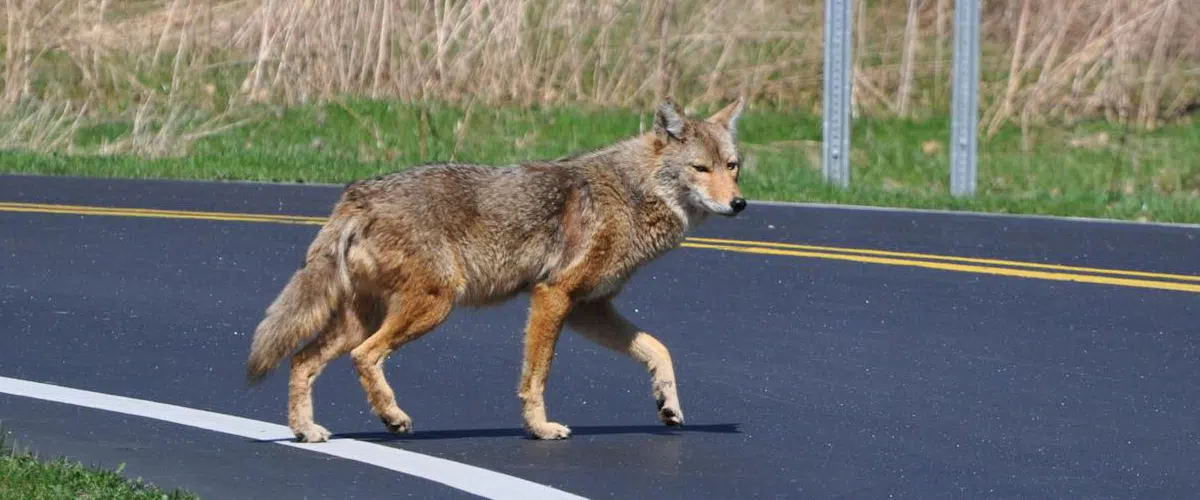
The Toronto area has many greens spaces, woodlots, parks, an extensive network of rivers, streams, ravines, as well as numerous underground waterways and tunnels that offer safe passage and living space to wildlife and allows animals to roam much of the cityscape without being exposed.
How Did We Get to Coyotes Posing a Danger to Toronto Residents and Pets?
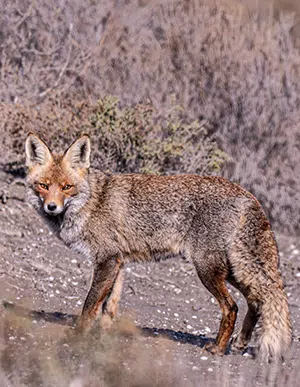 Abundance of Food
Abundance of Food
Coyotes are opportunistic omnivores that will eat almost anything available. Both urban and suburban areas offer an abundance of garbage and food scraps, as well as smaller prey animals.
Human Behavior
Residents still feed wildlife in their backyards or nearby parks. Even feeding squirrels or chipmunks will attract coyotes as these small mammals become easy prey. Likewise, feeding dogs or cats outside will bring about coyotes or other crittters who in turn become a quick and easy meal.
The Pandemic Connection
The pandemic lockdowns a few years ago created a very unique set of circumstances with lingering effects still felt today.
Wildlife Feeding
During the lockdowns, people were looking for entertainment and something to do while stuck at home and wildlife watching (and feeding) became a pastime. This resulted in wildlife associating people with food.
Increase in Number of Pets
Pet ownership during lockdowns in the U.S. went up from 67% to 70% of households; it’s safe to assume that the numbers are similar in Canada. Many families added a pet to their home during a time when they were able to spend more time at home. Pets occupying backyards also fall prey to coyotes.
Increase in Territory
During this time, people were also not allowed outside their homes to visit parks or even go for a walk in public. Spaces previously brimming with every-day life became deserted and safe for wildlife to take over. Couple that with the expectation of getting food from humans and it’s no wonder we now have a problem.
Conclusion
Coyotes that typically shied away from people have now come to associate people with being fed. Spaces once avoided by wildlife, have now become coyote territory.
First Steps to solving the Coyote Problem
Public education and awareness are key. There are several websites where more information can be found.
Why Hazing is Not the Solution
Hazing measures ultimately fail as the coyotes have learned not to fear humans and are becoming increasingly aggressive during encounters.
- Coyotes will quickly learn that hazing does not pose a real threat.
- The objective is food (you and/or your pet) and you cannot ‘teach’ a coyote to step away from food.
Imagine a new dog in your home: how many times do you need to correct unwanted behaviour before the dog learns and the behavior changes? Teaching a coyote (or any wild animal) to leave food or take away its meal without a violent reaction is an impossible task.
How Much Does Raccoon Removal Cost in Toronto?
- Written by: Dan Frankian
How Much does Raccoon Removal Cost in Toronto?
The short answer is: it depends. It depends on how many animals have settled in your Toronto home or on your property, where they are located (and how easy or difficult the location can be accessed), how long it takes to trap them, how many times a wildlife technician has to come to service the trap, and how much damage needs to be repaired. Let's explore in more detail:
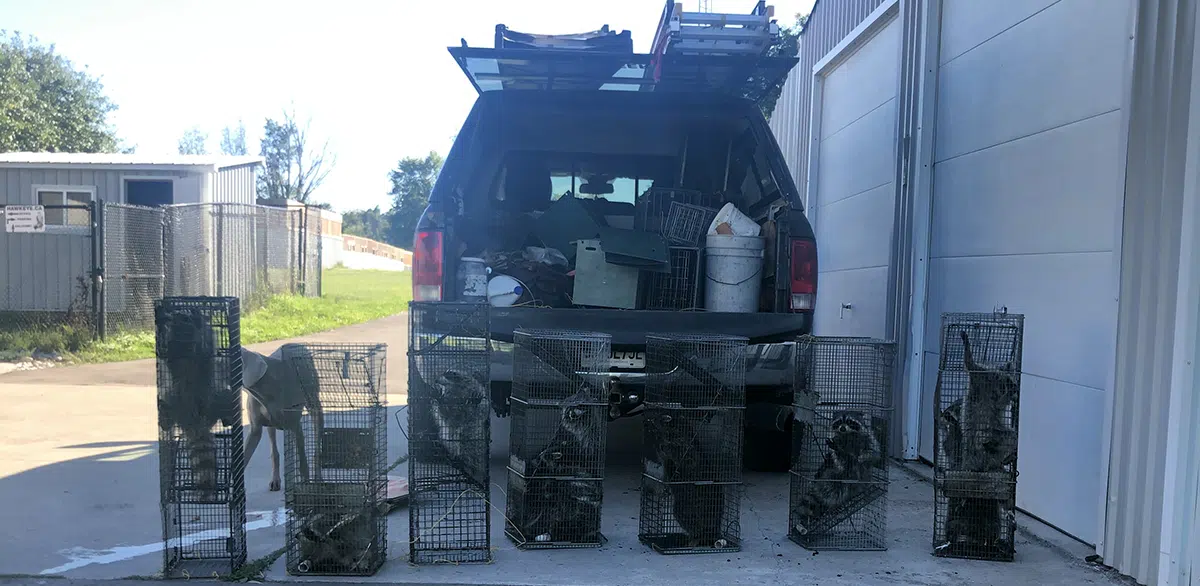
If you are a resident of Toronto, you are likely very familiar with raccoons - after all, Toronto has been dubbed the Raccoon Capital of the world. You've probably already dealt with dumped over trash bins and strewn garbage in the yard, suspicious noises coming from your attic, or you've seen raccoon tracks in your backyard.
Aside from the general nuisance and unsanitary conditions often left behind by raccoons, there is also the lingering threat of rabies for both humans and pets to consider. Having raccoons around your property is just not a good idea and can become very costly if not addressed in a timely manner. Yes, there is cost associated with removing the animals but ignoring a raccoon infestation to the point of structural damage to your home will be much, MUCH more expensive.
This article will break down the various factors influencing raccoon removal prices in the GTA and explain why Hawkeye's permanent removal services offer the most effective and long-term solution.
Factors Influencing the Cost of Raccoon Removal in Toronto
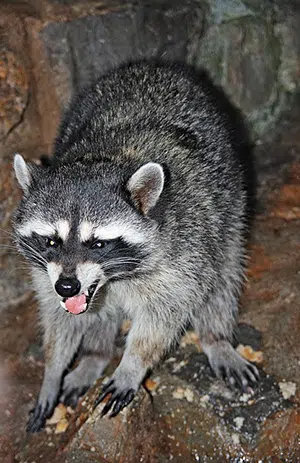 Raccoon removal in Toronto consists of traps being set and baited, animals caught and removed, and follow-up repairs and exclusion efforts to prevent further raccoon infestations. It is important to factor in repairs to the damages caused by raccoons - this can be as detrimental as damaged wiring or collapsed ceilings. Pricing for raccoon removal in Toronto depends on:
Raccoon removal in Toronto consists of traps being set and baited, animals caught and removed, and follow-up repairs and exclusion efforts to prevent further raccoon infestations. It is important to factor in repairs to the damages caused by raccoons - this can be as detrimental as damaged wiring or collapsed ceilings. Pricing for raccoon removal in Toronto depends on:
- Number of traps;
- Size of the property (residential or commercial);
- Number of visits by technicians;
- Exclusion efforts.
Severity of the Infestation
The number of animals seen or suspected will influence the decision of how many traps will be set and monitored. Generally, you'll want to set out at least two traps and increase that number based on the raccoon activity detected.
Location of the Raccoon(s)
Trapping cost can increase depending on where the raccoon activity is and how easy or difficult that location is to reach. Special infrared or thermal imaging equipment may be needed to locate the animals in walls or other inaccessible spaces.
Number of Visits Required
Every visit by a Toronto area wildlife technician will increase the cost of raccoon removal.
- There will be the initial home inspection - this is where the animal(s) will be located and a plan for number of traps and their location will be hatched;
- The home owner can call technicians to the property for a number of reasons - this can include moving the trap to a different location, rebaiting, or switching to a different trap design if the initial one does not yield the desired results;
- Collection of animals and traps;
- Closing up entry points to prevent further access by raccoons or other wildlife;
- Follow-up visits when the animals return.
How to Get Rid of Raccoons Living Under Brick Walls
- Written by: Dan Frankian
You've heard of raccoons in attics and sheds - but, did you know that they also burrow under brick walls and structures?
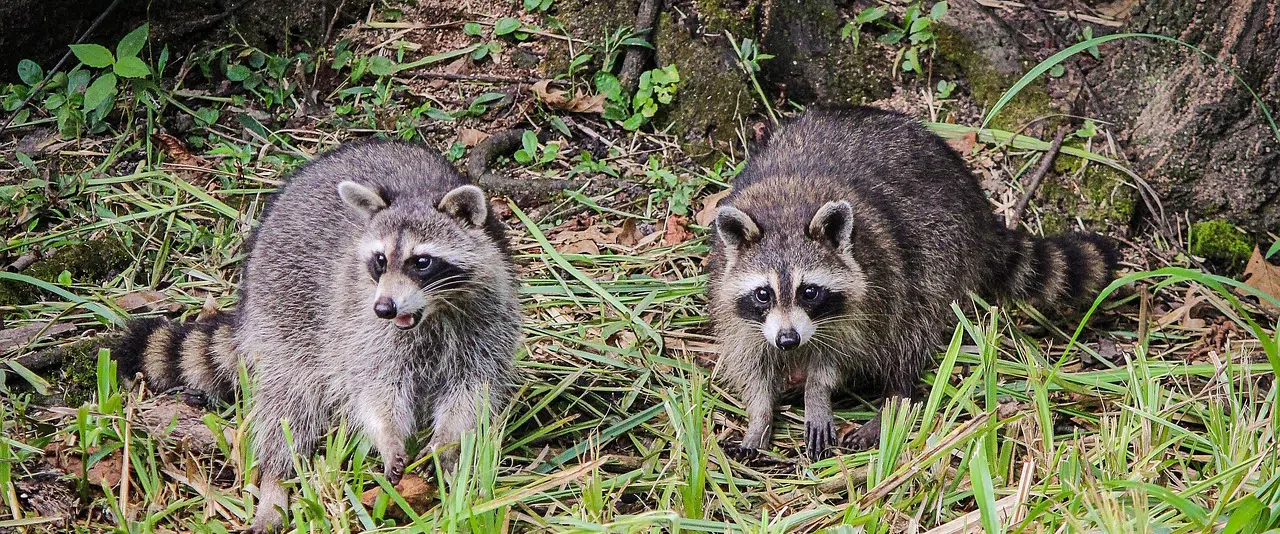
While many people are quite familiar with seeing raccoons in trees and consequently believe them to be excellent climbers, their ability to burrow under brick walls and foundations is a lesser known fact. Naturally occurring hollows are actually a preferred den location for raccoons. Recently, there have been a number of wildlife service calls dealing with getting rid of raccoons from under brick walls in the Aurora and Newmarket areas. Trapping and relocation in general has a very low rate of long term success, as raccoons tend to turn around and come right back. Let's look at how to spot a raccoon making a home beneath your brick wall or structure and what can be done about that.
Why Brick Walls Are a Raccoon Magnet
Again, hollow spaces, whether natural or man-made, make for wonderful raccoon dens. They are usually in locations with low traffic and low light and provide shelter from the elements. Raccoons are nocturnal and most active between the hours of dusk and dawn, while their days are mostly spent snoozing away.
Residential Structures
- Brick skirting/foundation on older homes
Older homes in particular often have more brittle foundations, something that is easily exploited by a determined raccoon; - Brick facades with gaps at ground level
Of course, any structure with gaps that can be extended (if need be) also fits that bill.; - Low exterior walls near gardens or compost bins
Again, any space that affords protection and camouflage from above makes for a fine raccoon home. Added bonus, if such a space is located near human food sources.
Commercial/Institutional Sites
- Brick retaining walls in parking lots or walkways
No different than in residential areas, a space below a retaining wall offers shelter and safety from predators; - Hollow brick walls with access behind signage or utility boxes
The less traffic, the better - and both signage and utility boxes don't see a whole lot of foot traffic; - Wall cavities near garbage storage areas (restaurants, schools, etc.)
Any space close to food disposal is perfect for the urban, opportunistic raccoon.
Identifying Raccoon Activity Under Brick Walls
Signs to Look For
 Visual Sightings
Visual Sightings
Observing raccoons entering or exiting from gaps or openings at the base of brick walls, especially at dawn or dusk eliminates any ambiguity;- Audible Clues
You may be able to detect scratching, rustling, or vocalizations (chattering, whistling, or whining) emanating from under the wall; - Paw Prints
In soft, sandy, or dusty soil or after heavy rain or snowfall, you may notice raccoon tracks near potential entry points; - Droppings and Urine
Look for an accumulation of fecal matter and the distinct odour of urine near the base of the wall or around entry points; - Damage to Vegetation
Soil may be disturbed and plants may be damaged near a brick wall where raccoons have built their den; - Sagging or Shifting Bricks
While potentially due to other factors, persistent digging underneath a wall can contribute to minor structural shifts; - Unusual Pet Behaviour
Observe your pets' behaviour along brick walls - this may well be a clue as to the location of raccoons nesting under brick walls.
Read more: How to Get Rid of Raccoons Living Under Brick Walls
Trained Dogs and Falconry for Goose Control
- Written by: Dan Frankian
Ever growing Canada geese populations, particularly in urban centers, call for an increase in goose control measures. The objective with all goose control efforts is to create an environment that geese perceive as unpredictable, unstable, unsafe, and unsuitable for nesting and breeding. In this article, we will explore the 2 most effective ways to accomplish that and have geese move on to more desirable locations on their own.
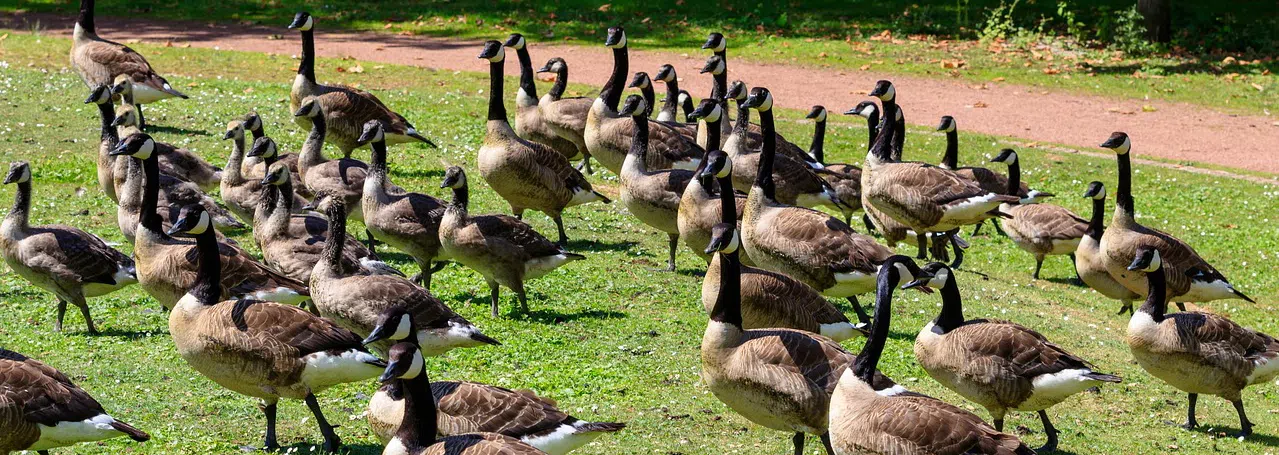
Trained Dogs for Goose Control: Ground-Based Deterrence
How it works
Dogs used to haze (or chase) geese, must be energetic, have excellent recall, and understand the goal. The goal of using dogs as a goose deterrent is to move the birds off, not hurt or kill them.
Advantages of Using Trained Dogs
- Versatility
Dogs can be used in a wide range of open and semi-open environments, including small bodies of water; - Immediate and Visible Impact
Geese react quickly to the presence and movement of dogs - disbursing immediately; - Relatively Low Risk to Non-Target Species
A skilled handler can direct the dogs effectively and focus their attention on geese only; - Can Cover Large Areas
Experienced handlers and well-trained dogs can cover a lot of terrain in a relatively short amount of time.
Limitations of Using Trained Dogs
- Water Limitations
Large bodies of water present challenges as geese can simply move to the far end of a pond, rather than leave the area.; - Potential for Disturbance to the Public
Careful planning and execution are necessary to avoid alarming people or other animals and to manage public relations; - Handler Dependency
The success of chasing geese with trained dogs is highly reliant on the skill and consistency of the handler; - Not Always Effective for Nesting Geese
Once geese are nesting, they may not be so easily persuaded to leave their nests and eggs.
Ideal Situations and Locations for Trained Dogs
- Parks and Recreational Areas
The open grassy areas found in public parks are a perfect environment for Canada geese and can be managed by trained dogs and experienced handlers; - Golf Courses
Similarly to parks, golf courses with short cut grass and water features are also prime real estate for geese. The use of dogs must be limited to times when there are no golfers on the premise; - Agricultural Fields
Rural areas and agricultural fields are also plagued by flocks of geese and dogs can be an effective goose management strategy, as long as crops aren't in danger of being trampled; - Airports and Airfields
Managing geese on grassy areas adjacent to runways requires careful coordination and safety protocols; - Waterfront Parks and Beaches
Trained dogs can do a fantastic job keeping beaches or waterparks clear of geese.
Birds of Prey for Canada Goose Control: Aerial Predation and the "Fear Factor"
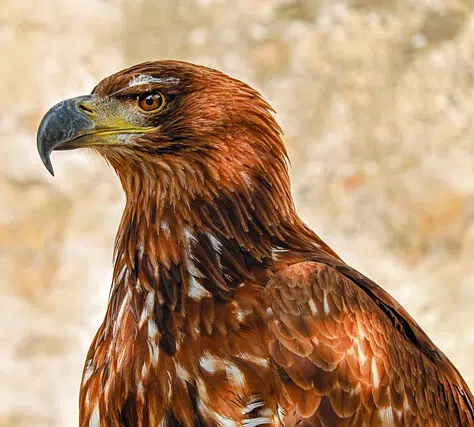 How it Works
How it Works
Large birds of prey are natural predators and recognized as such by geese and other pest birds. An eagle soaring above a flock of geese gets the message across that the best course of action is to leave the area immediately.
- Falconry offers a humane, effective, and environmentally friendly way to get rid of Canada geese;
- Geese perceive the eagle in the air as a lethal threat, even though the eagle does not attack;
- A skilled falconer who is fully in control of his bird is a must.
Advantages of Using Eagles
- Geese recognize and fear aerial predators, leading to long-term avoidance of the area;
- Birds of Prey can effectively deter geese on lakes, ponds, and rivers from the air;
- Raptors can patrol extensive territories and all terrains;
- Falconry offers a completely natural and non-evasive form of geese control;
- The persistent threat of multiple days of eagles in the air can discourage gathering and nesting long term.
Why Goose Control Is Crucial for Airport Safety in the GTA
- Written by: Dan Frankian
While Canada geese are usually considered more of a nuisance, around airports a flock of geese can have catastrophic consequences. The one place you never want to encounter birds is around an aircraft. Bird Control around airports poses specific challenges and requires expertise beyond the norm.

According to Transport Canada, the majority of bird strike incidents occur within the airport environment during the takeoff, climb, final approach, and landing phases of flight. Collisions with birds are a severe threat to the safety of the aviation industry. Human lives may be lost due to collisions and there is a constant threat of a major crash as a result of bird strikes. In addition, bird strikes cost airline companies as well as the military millions of dollars each year.
Canada Geese are a particularly large threat around GTA airports because of their size (no pun intended). A collision with such a large bird causes severe engine damage, broken windshields (or windscreens), and more.
Controlling and managing geese at airports is incredibly important to preserve human life and avoid damages and delays.
The Role of Nearby Structures in Attracting Geese to Airports
Green Spaces
Airports all over the world have plenty of grassy areas next to runways and taxiways. The grass is usually kept cut short - absolutely perfect for Canada geese.
Food Availability and The Landfill Connection
Besides the usual presence of human food leftovers on the ground or in unsecured trash cans, there is also the attraction of landfills which are often located near airports. Landfills attract geese and other pest birds as well as other wildlife.
Water Sources
Ontario's proximity to Lake Ontario as well as countless rivers, creeks and man-made bodies of water, are a haven for birds and other wildlife. Billy Bishop Toronto City Airport is surrounded by water and park space and a large number of resident geese. Hotels and golf courses around Pearson International Airport also attract a fair number of Canada geese.
Why Does This Matter to Airports?
Geese frequently travel between feeding and nesting areas, crossing flight paths and increasing the risk of bird strikes. Airport authorities should work with local businesses and municipalities to implement bird deterrent systems and strategies beyond airport property.
Why Geese Are Particularly Dangerous Near GTA Airports
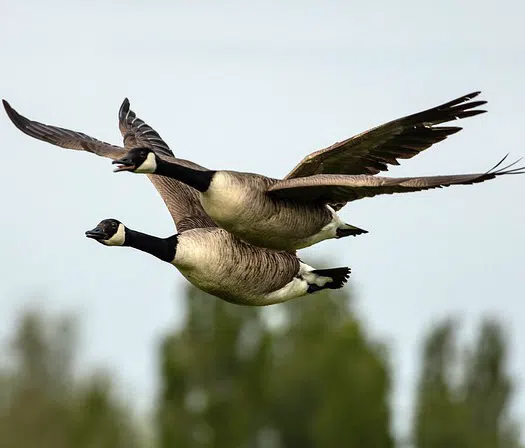 Size and Weight
Size and Weight
Canada Geese can have a wing span of almost 70inches and weigh up to 14lbs. A midair collision with even just one bird of this size often has dire consequences.- Number of Geese
Because Geese live and travel in flocks - often very large flocks - there is a high risk of bird strikes involving more than one bird. - Flight Paths and Altitude
Canada Geese generally fly low enough to intersect with departing or arriving aircraft. There is little recourse for airline pilots, short of a rejected take-off or go-around procedure on approach. - Attractive Habitats
As mentioned earlier, expansive grassy areas and proximity to water often attracts Canada Geese to Toronto's airports. - Seasonal Migration
Another layer of complexity is added during the fall and spring migration. Hundreds of Canada geese set out and travel together, increasing the likelihood of a mid-air disaster.
Effective Humane Geese Control Strategies for Airports
Because of airports being such busy and highly sensitive environments, all goose control solutions require precise planning and execution. Airport managers may forbid one or require another. Here are some of the geese removal techniques used around airports:
- Birds of Prey (Falconry)
Falconry using birds of prey (eagles) is highly effective as a goose control method in Toronto, both near airfields and in enclosed environments such as hangars. Making use of the natural predator/prey relationship, falconry offers a completely non-lethal and environmentally friendly solution to geese near airports. - Hazing with Dogs
Trained dogs chase geese without harming them. Especially in conjunction or as a follow-up method to falconry, dogs can have a great impact conveying an unstable and unsafe environment for geese. Having dogs regularly patrol the grounds is also a good idea. - Pyrotechnics
The use of pyrotechnics requires expert aim and timing; shots need to be fired during a 30-60 second window between take-offs and landings. Some airports actually require a bird control company to make available 10,000 rounds or more in their effort to displace geese. Pyrotechnics are discharged from 40mm or 12 gauge shot guns in front of geese, so they can see a projectile coming at them. To be clear, the shots are not fired at the birds directly, but at the ground in front of them. - Lasers
Operating a laser at an airport is a delicate undertaking. It requires a highly skilled laser operator who is familiar with necessary limitations around aviation, and the permission of airport authorities. - Remote Control Vehicles (ROVs)
Remote control boats are used in larger bodies of water where dogs are ineffective. - Habitat Modification
Most modifications will be made to ponds and other water features. Methods from pond netting or pond wiring to planting shrubs or erecting low fences are designed to deter or prohibit geese from landing on water and seeking refuge from predators. - Drones
Geese can also be chased with drones - this happens on water, not on land. Again, geese seek bodies of water to escape from danger. Making surrounding lakes or ponds not safe, will drive the birds away. - Nest Removal and Relocation
If any nests are spotted on airport property, they, of course, need to be removed immediately. If geese are still plaguing daily operations by mid June - July, geese can be rounded up during the time they are rendered flightless (molting) and relocated.
Read more: Why Goose Control Is Crucial for Airport Safety in the GTA
Dealing with Raccoons in Toronto’s Subway & GO Stations
- Written by: Dan Frankian
Back in 2024 one of Toronto's many trash pandas gained notoriety and a few raised eyebrows when he or she nonchalantly climbed on a TTC train. While TTC officials said that the fare-evading raccoon catching a subway ride caused no delays and was led to safety, this could have ended badly - for the animal as well as other passengers.
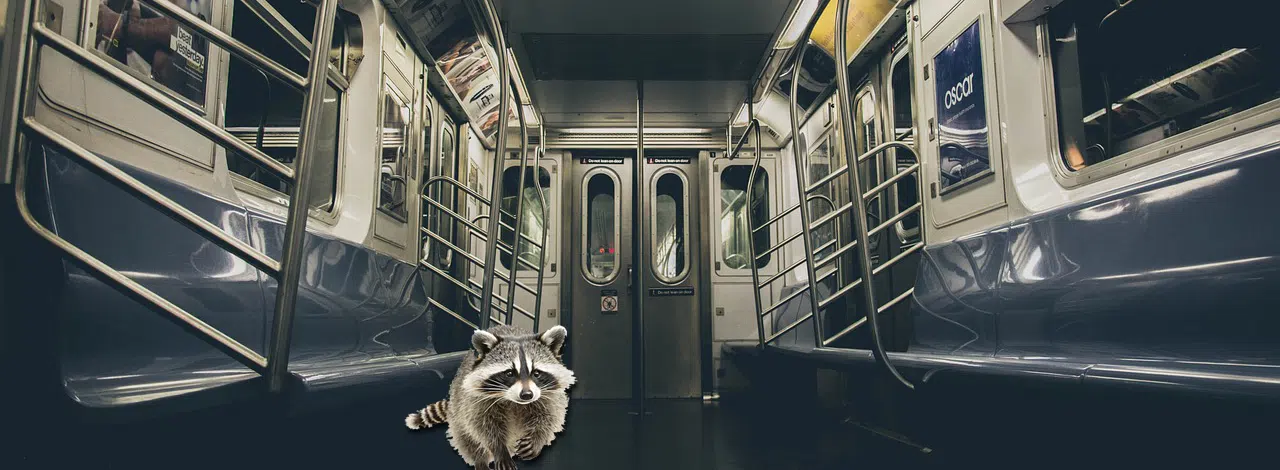
Toronto is known as the raccoon capital of the world for a reason. Estimates put the number of urban raccoons in Toronto at about 200,000. Food availability and few natural predators within city limits are contributing to the ever expanding raccoon population. And since raccoons are highly intelligent, naturally curious and resourceful, people rushing to and fro isn't going to deter them. Subway and transit stations offer shelter from the elements and overflowing trash bins with plenty of food.
Obviously, having wildlife ride the rails is a safety concern on so many levels and requires intervention by a licensed and experienced wildlife control company, such as Hawkeye Bird & Animal Control.
How Do Raccoons Enter Subway and GO Stations?
- Tunnel & Track Access
Raccoons are able to use subway tunnels and drainage systems both to travel and seek cover; - Vents & Utility Shafts
Small openings offer hidden entry points and less human traffic; - Garbage Disposal Areas
Food sources near platforms and stations attract raccoons and other wildlife; - Emergency Exits & Maintenance Areas
These also afford privacy and little disturbance. Additionally, maintenance rooms and GO Transit stations are often heated and that's definitely a bonus during Toronto's winter months.
The Impact of Raccoon Infestations on Transit Operations
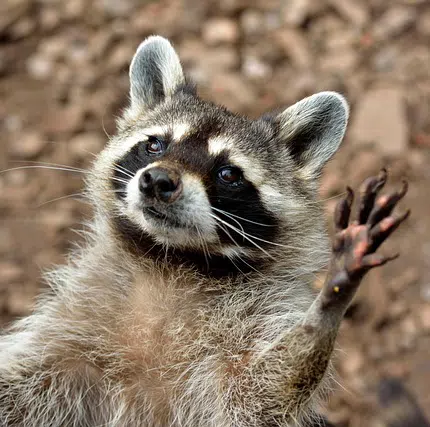 Operational Disruptions
Operational Disruptions
- Equipment Concerns
Potential damage to electrical wiring and equipment could not only interfere with the operation of transit, but also have catastrophic consequences and cost human life. - Blocked Drains and Ventilation Systems
The animals themselves, as well as their droppings or nesting materials may impact drainage and ventilation. - Sensors or other Infrastructure
Raccoons roaming the subway tunnels can easily trip sensors and cause confusion and havoc.
Safety Concerns
- Confrontations with Raccoons
Particularly during spring and early summer, there is the potential for aggressive raccoon encounters with commuters or staff. Young mothers might be raising their young unbeknownst to passers-byes. - Disease Transmission
Of course, rabies is the biggest concern when it comes to raccoons but raccoon roundworm and other airborne parasitic infections are also a possibility. - Accidents involving Humans
Tripping hazards or slip and fall accidents due to droppings or debris are a danger as well.
Hygiene Issues
Unsanitary conditions can rage from foul smells to slippery wet feces on the ground and even mites and fleas if there is direct contact with a raccoon.
Why Relocating Raccoons Doesn’t Work for Transit Stations
In Ontario, if a captured raccoon (or other wildlife) is to be released, it needs to be within a 1km radius of the site it was caught at. This is to prevent excess distress to the animal as well as the spread of disease. While this is problematic even for homeowners, in the context of transit stations it is down right impossible to succeed.
- Homing Instinct
Raccoons have a very strong homing instinct. Their home range is where they know how to navigate, where food and water can be found and where they don't have to compete for territory. - Food Availability
Why forage when there's a buffet laid out daily? One man's trash is another raccoon's next meal. Raccoons are clever and resourceful and take full advantage of what humans willingly or inadvertently offer. Careless trash disposal further adding to the raccoon problem in subway stations. - Connecting Tunnels
Returning to their familiar territory is aided by the interconnectedness of transit stations. Raccoons can easily slip in unobserved and travel away from prying eyes back to where they feel comfortable. - Influx of Raccoons
If or when a raccoon has been removed, its territory is now open to new applicants. With as many raccoons as Toronto has, space is precious and as soon as one territory is vacated, another raccoon or raccoon family will move in.
Read more: Dealing with Raccoons in Toronto’s Subway & GO Stations
How to Permanently Remove Raccoons in Vaughan
- Written by: Dan Frankian
Vaughan home and business owners alike are plagued by recurring raccoon invasions. Highly intelligent, adaptable, and resourceful animals, raccoons are excellent at gaining access to buildings and attics. Join us as we explore the best ways to get rid of raccoons permanently and prevent subsequent raccoon infestations in Vaughan and beyond.
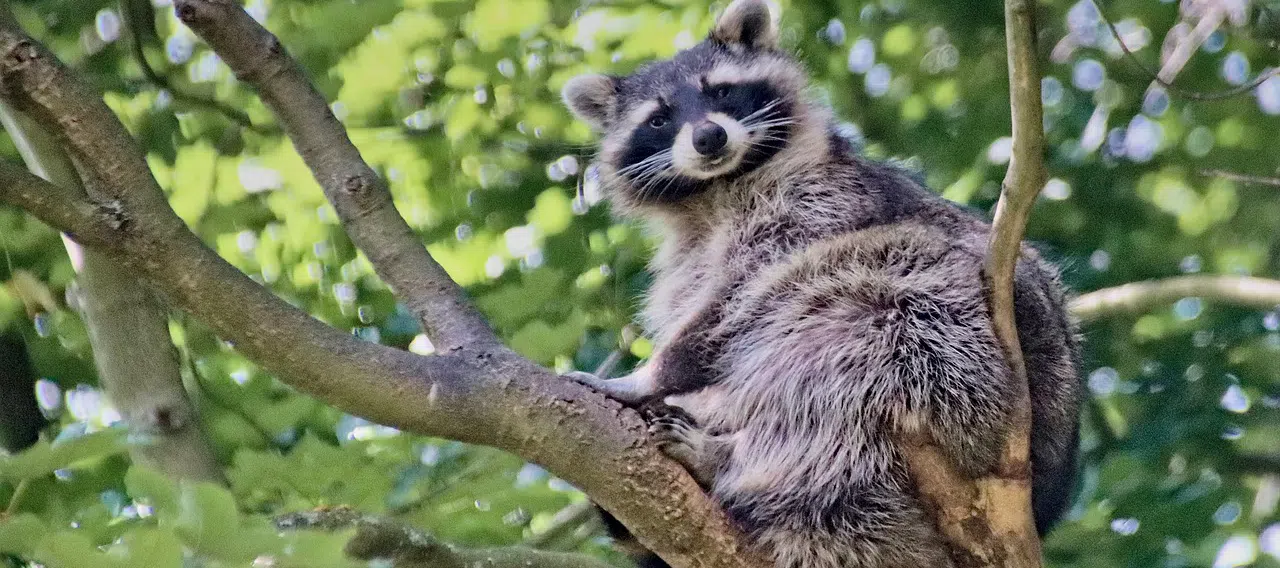
With raccoon mating season behind us and expectant moms looking for a safe place to birth and raise their offspring, right now is prime time for raccoon home invasions. And therefore, it is the busiest time for raccoon control and removal in Vaughan and surrounding communities.
Why Are There So Many Raccoons in Vaughan?
Well, the problem is two-fold. On one hand, the urban raccoon has plenty of food, even if it does require rummaging through trash bins. On the other hand, because of constant human presence, natural predators like coyotes or wolves will keep their distance. That means that more raccoon litters survive and mature to mating and breeding age... and so on.
Limitations of Traditional Raccoon Removal
Understand that once a raccoon has gained access to your attic, it will return. There's no question about it. And if that raccoon is a mother with kits in your attic, she will move mountains to get back to her babies. So, you will be stuck in a never ending loop of trapping the animal, releasing it, and plugging up and reinforcing wherever she managed to get in. Wash and repeat.
Live Trapping & Relocation
Raccoon trapping and relocation is a popular (and often the only) service offered by virtually all wildlife removal companies. Let's inspect what that looks like:
- Release within a 1km Radius
If a trapped raccoon is to be released, it must be within one km of the capture site. This is because dropping wildlife off far away from their home range would leave them disoriented, unable to secure food sources, competing for new territory, and just generally be in distress. It would also greatly increase the chance of disease spreading. - Repeat Offenders
A trapped and released raccoon will almost always return to where it was caught and to where it perceives 'home' to be. Often times, it will literally turn around and walk back. - Non-Professional Trapping
Just about anyone can purchase a trap, bait and set it, catch themselves a raccoon, then drive down the road and release it. This is considered to be humane. But, is it? Remember, above we talked about how distressed the animal is? How it may have to physically fight for space and food in a place where other wildlife is already established? And what about offspring? Have all the babies been caught together with their mother? Because, if not, those babies are left to starve to death.
DIY Repellents & Deterrents:
Raccoons are highly intelligent, curious, and resourceful. It won't take more than a day for them to figure out that a motion sensor light poses no danger. The same goes for sprinklers. Raccoons are actually very fond of water and likely will see sprinklers as an added bonus.
In terms of smells, there are some scents they do not care for, but those won't keep them away for long, either. Unless, the scent indicates danger. Here's where it gets interesting: The scent of a male raccoon (urine) WILL make a mother raccoon pack up her babes and move the family to a new location. That's because male raccoons will kill kits in order to mate with the mother again. Momma raccoon has zero interest in any proposed shenanigans with a male while she's tending to her offspring.
Goose Control for Aurora’s Schools and Playgrounds
- Written by: Dan Frankian
One of Canada's most iconic and recognizable birds is the Canada Goose. Highly intelligent and adaptable, geese increasingly inhabit urban spaces, parks, and even school grounds. With that come some concerns for children's and staff's health and safety. Let's explore the struggles schools face to control geese, as well as goose control methods for Aurora's schools and playgrounds.

Why Are Geese Attracted to Schools and Playgrounds?
Any open and green space makes a goose's heart sing - even better if located near water.
Playgrounds and Sports Fields
With their short cut grass, school grounds, sports tracks, and even playgrounds make for an ideal nesting and feeding area for geese. Geese look for open spaces, with a view supporting early predator detection.
Lack of Natural Predators
The mere constant presence of humans promises fewer natural predators such as coyotes and wolves, hence making for safer breeding sites.
Food Sources
Humans (little humans, in particular) tend to drop food on the ground or leave behind crumbs and crusts, and whatnots :) Your child's mid-day snack will also be enjoyed by a goose - if given the opportunity.
Nearby Water Sources
If we are looking at the GTA or Southern Ontario as a whole, water is never very far away. If your school or playground happens to be near Lake Ontario, a pond, or a retention basin, it provides a perfect environment for nesting geese and their offspring.
Risks of Geese in School Environments
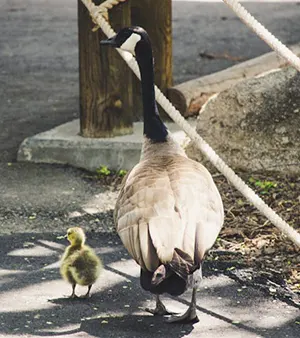 Aggressive Behaviour Toward Students and Staff
Aggressive Behaviour Toward Students and Staff
- During nesting season (March to June), geese become extremely territorial and may chase, hiss, or even attack students and staff who unknowingly wander too close to their nests.
- Young children are especially vulnerable as they may not recognize the warning signs of an aggressive goose and/or don't know how to deescalate a confrontation.
Health Hazards
- Goose Droppings
Goose droppings are highly unsanitary and contain bacteria like E coli, Salmonella, and Cryptosporidium. They can and will contaminate surfaces and areas frequently used by children. - Feathers
Feathers can also carry a multitude of parasites and bacteria - and children adore collecting and playing with feathers. - Increased Presence of Insects
Geese (especially their droppings) attracts insects, further degrading the hygiene of school or playground surfaces and equipment.
Read more: Goose Control for Aurora’s Schools and Playgrounds
- Prevent Aggressive Geese with Expert Goose Removal in Pickering
- Effective Ways to Get Rid of Geese in GTA Ponds
- How Groundskeepers Can Get Rid of Geese from Golf Courses
- How to Deal with a Raccoon Infestation in a Multi-Unit Building or Apartment Complex
- Why Humane Raccoon Removal Is the Best Option in Oakville


